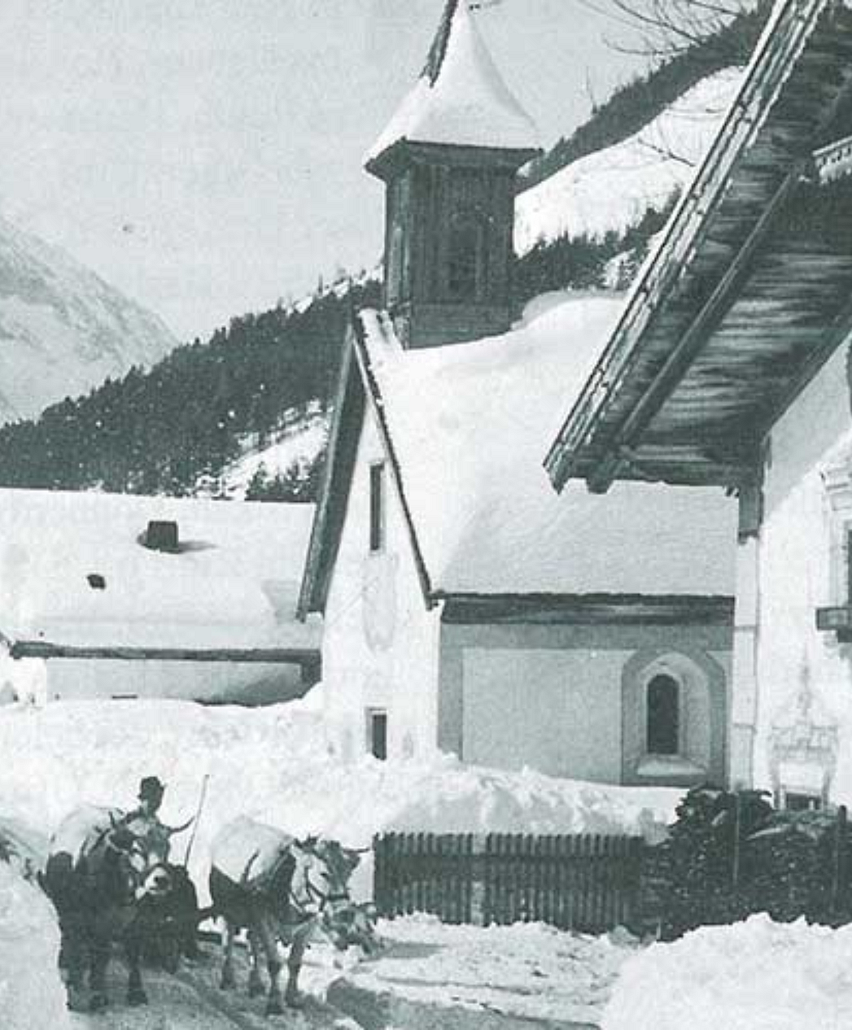
Region Seefeld – Tirols Hochplateau
The history of Leutasch
Leutasch, at the foot of the Wetterstein mountain range, with two parish churches, a lake in which Emperor Maximilian loved to fish, and its scenic Gaistal valley with countless pastures and mountain huts – the beauty of which writer and hunter Ludwig Ganghofer discovered back in 1896 – together with a border fortress commissioned by Claudia of Medici, is an idyllic place in which to relax, unwind and marvel at the beauty of nature.
The first mention of Leutasch dates back to 1166 in documents referring to properties located alongside the stream named ‘Liutaske’ from which the municipality takes its name. Permanent settlements, however, must have existed much earlier since the first church (Church of St. Magdalene in Oberleutasch) was consecrated back in 1190.
The properties mentioned in the documents belonged to the Stams and Wilten monasteries, to the Augustinian monastery of Polling near Weilheim and to the church of Pfaffenhofen. There were also a few freeman farmers. The forests were the property of the princely courts and, at the end of the 12th century, the clearing of woodland began, which, although intensive, was carried out with care and a deep reverence for nature. Hunting cabins, which were originally only used in summer, later became year-round residences – and so the first farms evolved.
For centuries the people of Leutasch lived off the land and the forests. Leutasch, for a long time, was the main provider of wood for Innsbruck and Hall. Between 1690 and 1738 the so-called ‘Hirn Channel’ (named after the Hirn brothers) was created. It was, at that time, a huge construction and served as a chute for transporting wood. The channel led from the Gaistal valley, through Buchen, all the way to the River Inn near Telfs. At the beginning of the 19th century, between 200 and 300 woodcutters were hired during the summer months in the Gaistal valley in Leutasch. They lumbered some 80,000 fathoms of wood (= 160,000 m³). On 30th June 1815, the ‘Hirn channel’ was destroyed and washed away during a terrible storm, in which the entire municipality of Leutasch was also flooded.
Major wars, such as the Thirty Years’ War, the Bavarian invasion of 1703, the Tyrolean struggles for liberation during the Napoleonic wars against Austria in 1805 and 1809, and the two World Wars of 1914 -1918 and 1939 - 1945, did not leave the Leutasch valley unscathed. Desperation and poverty were rife. The village elders, women and children worked the land as best as they could and farmed just enough to avoid starvation.
Owing to its vast areas of forestland, Leutasch is an important hunting area. Among its many distinguished and well-known hunting-ground owners in the late 19th century was the writer Ludwig Ganghofer – thanks to whom, Leutasch became a household name far beyond the borders of Tyrol. His books, many of which were made into films, including “The Silence in the Forest" and “The Edelweiss King", were based on his experiences in, and impressions of Leutasch.
In the Ganghofer Museum you can gain insight into Ganghofer’s life and work, the tradition of hunting and the history of the village. A good, balanced combination of rural farming traditions, tourism and trade, of customs and a modern Zeitgeist, strengthen the sense of attachment to the home region for all generations and make Leutasch what it is today – a municipality that is vibrant and active, with positive visions for the future.